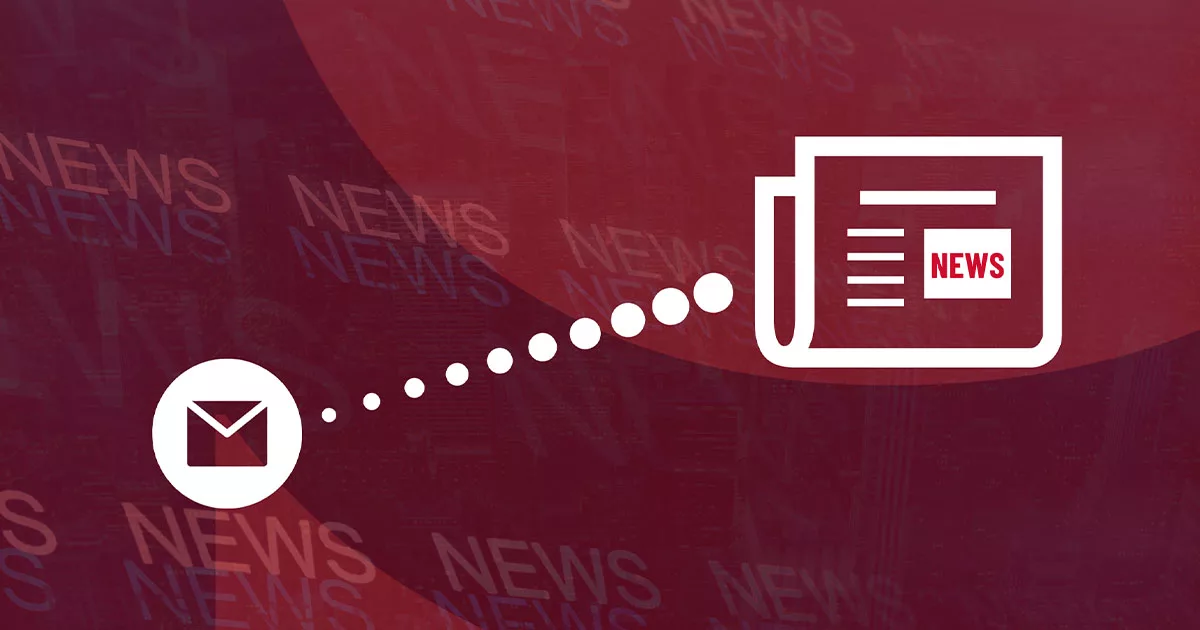By Kalli Vetrano
You’ve put in the time and effort necessary to truly understand a reporter’s beat, and crafted the perfect personalized pitch to introduce them to your client. You’ve figured out the most optimal time to send your initial outreach email. You’ve double checked all the hyperlinks, made sure all images are appropriately embedded and now it’s finally time for the big moment – you click send!
Congratulations! Your job is done.
No, just kidding.
As many public relations professionals know, preparing and sending a pitch is just the beginning of our efforts to secure coverage.
The most challenging part of pitching is often the follow-up. To truly master this art form, it’s imperative to understand two things: why it’s so important to pursue feedback and how to seek it in a professional way.
The first question you should ask yourself is: ‘Should I follow up?’
While you may think it’s safe to assume that a lack of response means a lack of interest, PR professionals must go above and beyond to secure feedback, and hopefully an opportunity, for a client.
It’s simply lazy to think that if the reporter was interested, they would have responded the first time. In a perfect world, this could be true. However, in the world we live in, we are challenged with a constant news cycle and endless stories trying to make their way onto a reporter’s radar. Reporters can receive hundreds of pitches per day, if not more. Shooting off one email, no matter how well-written and targeted it may be, is the best way to miss an opportunity.
So, what can we do to increase our chances of securing that coveted piece of coverage?
Follow up!
Here are a few best practices that will help you master the art of the follow-up:
• If your news is extremely timely – and we know this sounds scary – you need to actually pick up the phone to (gasp!) call reporters and news desks once your initial email is out. This is a surefire way to alert the media to your news and get instant feedback if you’re lucky enough to connect. However, we advise you to be respectful of reporter’s contact preferences as some may not be receptive to phone calls.
• If your news is not time sensitive, it’s perfectly acceptable to follow up the next day with a new email to bring the news back to the top of a reporter’s inbox.
• Including an additional piece of information in your follow-up may sweeten the deal in securing interest. For example, if you’re pre-pitching a research paper sharing your client’s most recent findings, highlighting one or two attention-grabbing points can pique interest and give reporters a preview of what valuable information the full report has in store, and encourage them to ask for more.
• Newsjacking can also play a role in follow-up. One of the reasons it is so important for PR professionals to stay on top of the news is to monitor for breaking stories or newly released statistics that support the newsworthiness of the initial pitch hook. By using these insights to follow up, you (and your client) are presenting yourself as a trusted and valuable source and giving the reporter the opportunity to include your client’s insights in a piece of breaking news coverage.
• Less is more when it comes to follow-up pitching. While you may have exciting new information to share, keep the email copy brief so it’s a quick read for busy journalists. Remember, the most important points were already covered in your initial outreach. Rather than drafting a lengthy note, keep follow-ups to 1-2 lines.
• Do not, and we repeat DO NOT, ask if a reporter has seen your email or write that you didn’t hear from them. These types of accusatory phrases can rub reporters the wrong way and thwart your attempt to receive a response.
• Don’t stalk. While sending more than one follow-up is often necessary to receive a response, emailing or calling multiple times a day is overkill.
To sum it all up: be brief, provide value and just make it as easy as possible for a journalist to respond and keep the ball rolling. Your story will be published before you know it.






